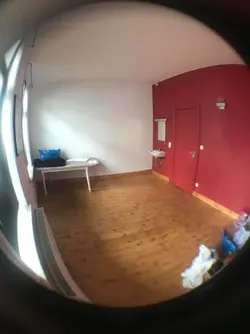I'm planning to build a home photostudio, unfortunately my available space is limited.
Studio purposes:
-Fashion shoots
-Portret shoots
-Product shoots
-Interviews (video)
I will get window blinds to block the light coming from outside. I would like to install a rack of 3 backdrops (width of 3 meter) on the white wall next to the washing table (3m92).
To avoid a loss of space i would install 4 wall brackets from interfit to mount the lights on.
photo's of the space:



What would according to you be the best solution regarding layout, light- & camera setup?
Thanks!
Studio purposes:
-Fashion shoots
-Portret shoots
-Product shoots
-Interviews (video)
I will get window blinds to block the light coming from outside. I would like to install a rack of 3 backdrops (width of 3 meter) on the white wall next to the washing table (3m92).
To avoid a loss of space i would install 4 wall brackets from interfit to mount the lights on.
photo's of the space:



What would according to you be the best solution regarding layout, light- & camera setup?
Thanks!












